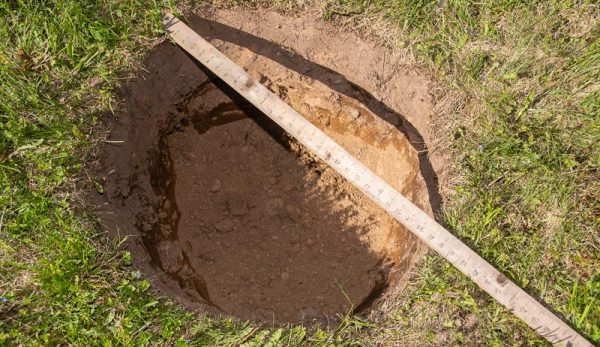
Sometimes, the best tool for a job isn’t one you purchase from a store, but one you craft yourself to suit a specific need.
Such is the case with a handmade measuring stick I use for planting trees. The design is elegantly simple, and this simplicity is what makes the measuring stick perfect for its assigned purpose.
A Tree Task
I wish I had been clever enough to design the measuring stick myself, but I owe its creation to my father. It was in the fall of 2018 that I decided to plant a new orchard, using seven apple trees and three plum trees as the foundation.
I purchased them in pots averaging 7-10 gallons in size. And since the root balls were fairly heavy to work with, I wanted to be sure of digging suitably sized holes before lowering the trees into place. I didn’t want to wrestle a tree into position, realize the hole was too shallow or deep, and have to lift it back out to make adjustments.
Read more: Planting a new orchard? Don’t forget your graph paper!
Custom & Handmade
At first, I made do with a regular tape measure to determine the dimensions of the holes. But my father—always quick to see better ways of doing things—concluded I needed a simpler, more durable tool. So to replace the tape measure, he prepared me a measuring stick: a piece of 1×2 lumber measuring four feet in length. Each inch was indicated by the ink of a permanent marker.
The benefits of this handmade measuring stick were immediately obvious. Imagine you’re plotting the diameter of a hole that you’ll dig in the middle of a grassy area. A tape measure with stiff metal tape, expanded and locked to the appropriate length, is terribly uneven in its weight distribution.
The heavy end where the tape rolls up tends to sink into the grass. This causes the expanded portion of the tape to flail about in all directions.
A cloth tape measure is similarly tricky to use, since it’s hard to keep the tape taut when you’re not actively using it. Tape measures simply aren’t inclined to sit happily and hold their measurements while you dig holes around them.
Read more: What’s the difference between a spade and a shovel?
The Exact Right Tool
In contrast, my measuring stick is perfectly even in its weight distribution. And when I plop it down on the ground, it stays in place.
If I want to dig a 3-foot hole, I lay down the measuring stick, cut the sod at the 0-inch and 36-inch marks, pivot the measuring stick 90 degrees, and repeat.
The perimeter of the hole is marked in no time. Then I can start digging.
My measuring stick has other advantages, too. It’s tough and durable, so I don’t have to worry about clogging it with dirt or leaving it outside. And when combined with a regular tape measure, it helps provide highly accurate measurements of hole depth.
The measuring stick doubles as an ordinary 4-foot 1×2. I can lay it flat across the hole and use a tape measure to gauge the distance from the center of the measuring stick to the bottom of the hole. That’s helpful when trying to match the depth of a hole to the height of a root ball.
Best of all, if my homemade measuring stick eventually wears out, a new one is just a length of 1×2 and a permanent marker away!




